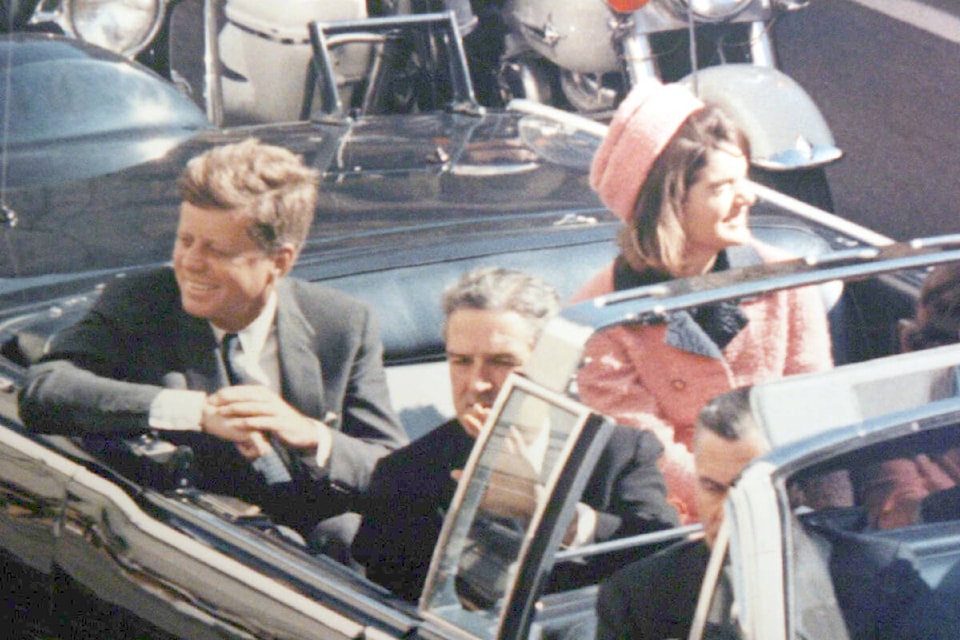Mike Selby
It was in the late fall of 1964 when ‘The Warren Commission Report’ was finally made available to the public. A joint venture by the New York Times and Bantam Books, this 4-inch thick and 888 pages presidential report was printed in softcover and priced at $2.00. A hardcover edition could be ordered directly from the U.S government, but that would set readers back $3.25. The public had waited almost a year to find out the one question on everyone’s minds: Was President John F. Kennedy killed by a single gunman?
The 84-member commission spent 10 months trying to answer that. It was the most important criminal investigation of the 20th century. It remains the most misunderstood. Its flaws are many and deep, which has caused countless people to question the Commission’s ultimate conclusion: “The assassination of President Kennedy was the work of one man, Lee Harvey Oswald. There was no conspiracy, foreign or domestic.”
After the first week of it being released, almost 90 percent of all Americans agreed with its findings. But then questions began to be asked; holes in the report itself were pointed out; and very soon it appeared the Warren Commission had got it all wrong. This begins with Mark Lane.
Lane was a New York attorney who was well known to the Warren Commission. He falsely told them he represented Oswald, demanded to be allowed to cross examine witnesses, and was caught lying when they interviewed him. Undeterred, he went on a lucrative speaking tour of Europe, parading Oswald’s emotionally unwell mother on stage with him. His 1967 book, ‘Rush to Judgement’ was a point by point criticism of the commission. It was the bestselling non-fiction book of the year, and sold well over a million copies.
Also appearing that year was Harold Weisberg’s ‘Whitewash,’ Thomas Buchanan’s ‘Who Killed Kennedy,’ Richard Popkin’s ‘The Second Oswald,’ Raymond Marcus’s ‘The Bastard Bullet,’ Leo Sauvage’s ‘The Oswald Affair, and Penn Jones’ ‘Forgive My Grief.’ More titles appeared before the decade was finished, including Edward Jay Epstein’s ‘Inquest’ and Josiah Thompson’s ‘Six Seconds in Dallas.’ Sylvia Meagher, a researcher for the World Health Organization published two books that year: ‘Subject Index to the Warren Report and Hearings and Exhibits,’ and ‘Accessories After The Fact.’
The 70s saw two fictional treatments of the assassination: ‘The Tears of Autumn’ by Charles McCarry and ‘Executive Action’ by — you guessed it — Mark Lane. And from then until this year, over 2,000 books have been published about JFK’s murder. The most notable ones are Jim Marrs’ ‘Crossfire,’ Anthony Summers’ ‘Not In Your Lifetime,’ and ‘On The Trail of The Assassins’ by Jim Garrison (turned into the 1991 film ‘JFK’ by Oliver Stone.) Not to be left out, Mark Lane published two more books: ‘Last Word’ and ‘Plausible Denial.’ Other bestsellers are Hugh McDonald’s ‘Appointment in Dallas,’ Henry Hurt’s ‘Reasonable Doubt’ and ‘The Man Who Knew Too Much’ by Richard Russell. Stephen King even wrote about it in his 2011 book ‘11/22//63’.
Taken as a whole, these books blame Kennedy’s murder on 82 separate shooters, hundreds of named people and 42 different organizations. The killers have been foreign governments, the mafia, the CIA, President Johnson, the FBI, the Secret Service, a group of Texas oilmen, Vietnamese freedom fighters, French heroin syndicates, Kennedy’s younger brother Bobby, his wife Jackie, the Ku Klux Klan, zombies, and even aliens.
(The only book which agreed with the Warren Commission was 1965’s ‘Portrait of the Assassin,’ written by future president Gerald Ford. It was quickly pulled after dismal sales.)
Will the mystery (or mysteries) about who shot Kennedy and why ever be solved? Or, perhaps as Bobby Kennedy said, shattered for years by the loss of his older brother, “does it matter? It won’t bring him back.”
